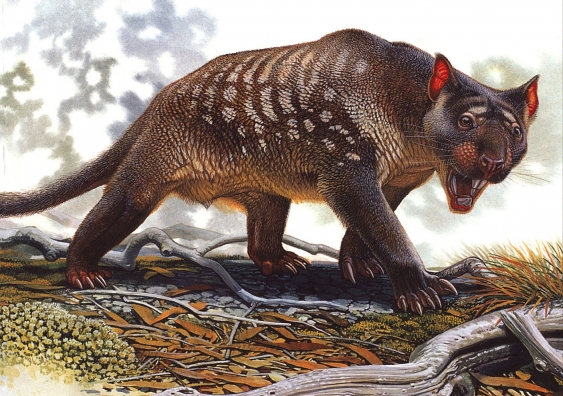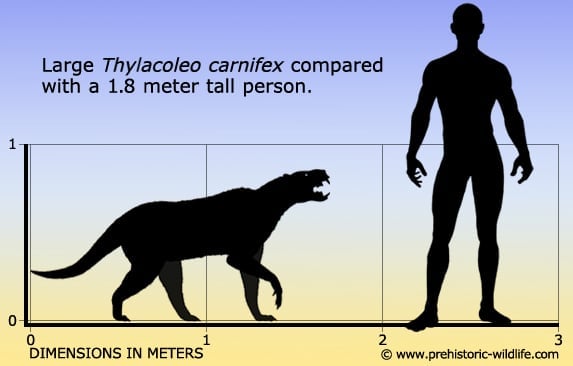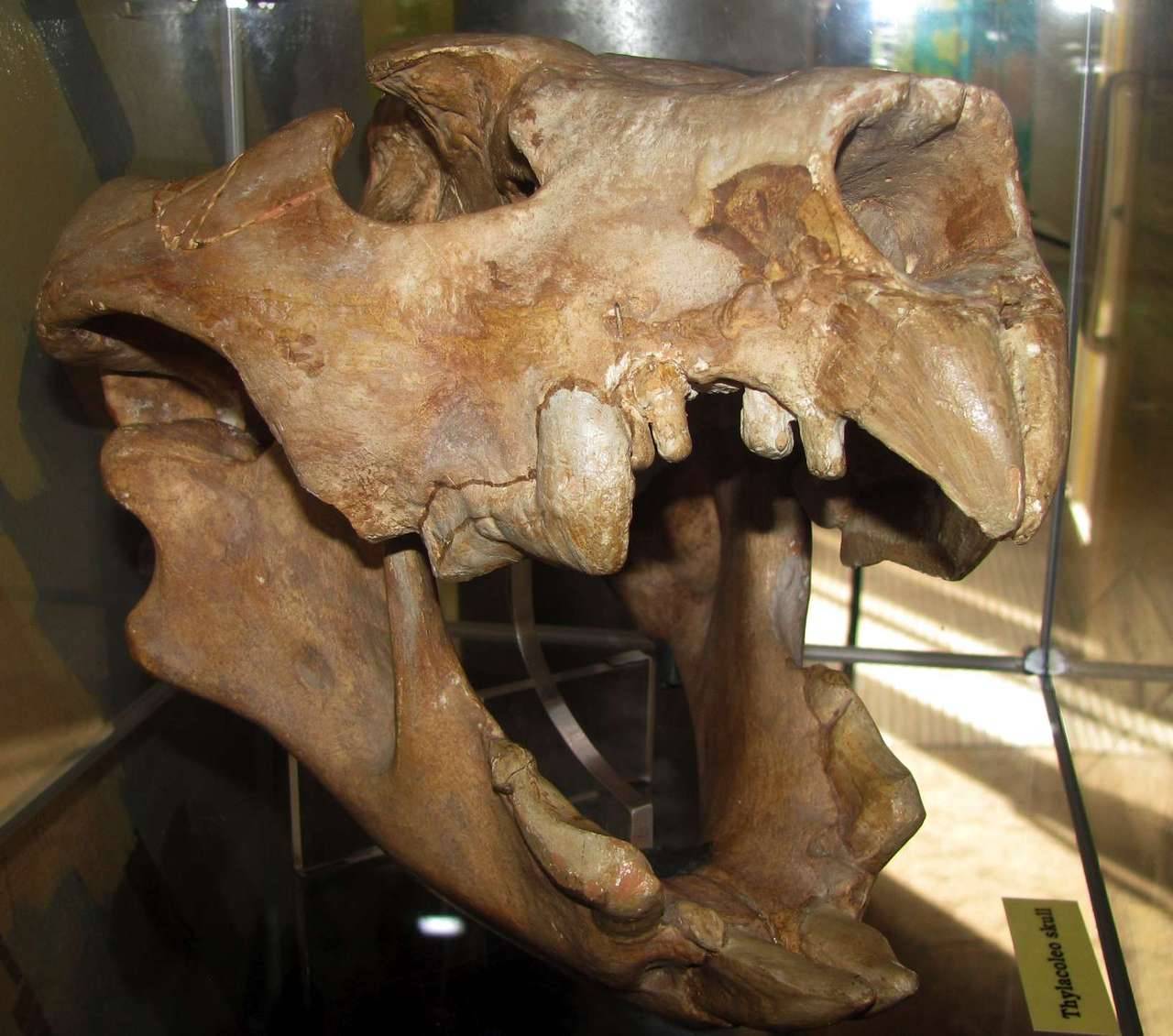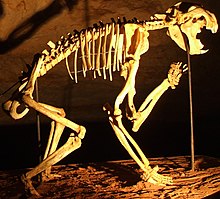This post is going to focus on Thylacoleo, Australia’s marsupial predators.

Thylacoleo lived in Australia between 2 million and 46 thousand years ago, and is roughly the size of a large dog. As the name “marsupial lion” suggests, thylacoleo was in fact a marsupial, meaning it carried its young in a pouch attached to its stomach. It was fairly unique among marsupials in that it was a carnivore. The only other case of

predatory marsupials I was able to find is Thylacines, which were coyote-like marsupials.
This animal’s habitat it believed to have been dry and open forests. It had an enlarged claw on its thumb as well as forelimbs that were more developed than its hind limbs. These traits suggest it may have been well adapted to climbing, and though they could run were probably not fast, possibly living a similar lifestyle to jaguars. It is also possible that this trait was necessary to remain safe from other predators of the time, such as the alligator-sized monitor lizard megalania.
Despite being commonly called a marsupial lion, thylacoleo has no relation to actual lions such as those in Africa, and the resemblance is a case of convergent evolution. Instead, the closest living relatives to this animal are koalas and wombats. Its ancestors were also herbivorous wombat-like animals, which places thylacoleo in a unique situation, as carnivores are rarely evolved from herbivores so closely as this.

Thylacoleo is also extremely eye-catching due to its strange arrangement of teeth. A pair of its upper and lower molars are enlarged and form flat, shearing blades, and other molars are either reduced or entirely absent. It also has adapted its front teeth to be long and sharp, serving the same purpose as canine teeth in most other mammal predators. This really serves to show how herbivores developed carnivorous traits, given its rabbit-like appearance and the development of grinding teeth into more of a cutting function.

The sources I have found state that Thylacoleo had the strongest bite force of any animal living or extinct, but pretty much every animal I have researched so far seems to, so I am pretty sure that that’s an exaggeration. Though maybe not the strongest ever, it would make sense for thylacoleo to have had an extremely strong bite force, as muscle connections in the jaw and the presence of incisors so far back in the mouth would indicate considerable jaw strength. This as well as the highly developed forelimbs and thumb claw described earlier suggest that thylacoleo was probably able to tackle and kill prey that was much larger than itself.
There isn’t much else about Thylacoleo, but I think it is a really interesting animal for a lot of reasons. Usually when I think of marsupials I think of kangaroos or koalas or whatever other herbivorous animals, so to think that there were once marsupial predators in Australia is cool to me. They also have such a unique dentition which is something that I feel tends to be pretty consistent in animals, so it really adds to the allure of this animalthat it has such a weirdly-designed mouth. Overall this is just another one of those animals that changes the way I look at the area where it used to live, because to know what used to live in Australia and how different it is from what is there today is something I find so cool to think about.
Sources:
https://australian.museum/learn/animals/mammals/thylacoleo-carnifex/
https://prehistoric-fauna.com/Thylacoleo-carnifex
https://prehistoric-fauna.com/Thylacoleo-carnifex
This is another super interesting blog. I would have thought that the Thylacoleo’s closest living relatives would be carnivores, not the herbivores like koalas and wombats. The teeth of the Thylacoleo are also interesting, especially since they evolved into being used for cutting. It is pretty funny that most of your research on prehistoric animals has resulted in the articles reporting that each of the animals has “the strongest bite force”. Excited to read more!
This was yet again such an interesting blog post! I love the general topic of prehistoric animals. Thylacoleo is a fascinating animal because it was not actually a lion, but rather a marsupial that evolved similar physical characteristics to those of a big cat. Its evolution is a testament to the incredible adaptability and diversity of life on Earth. Great post, Matt!